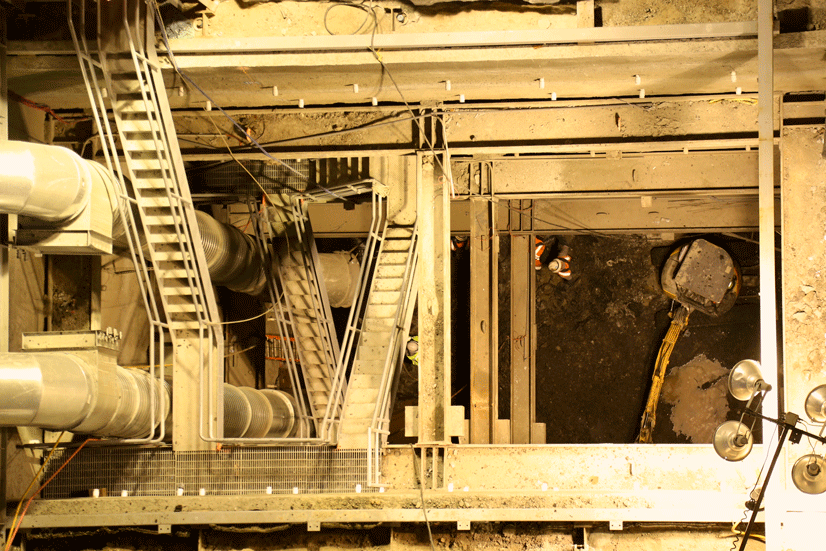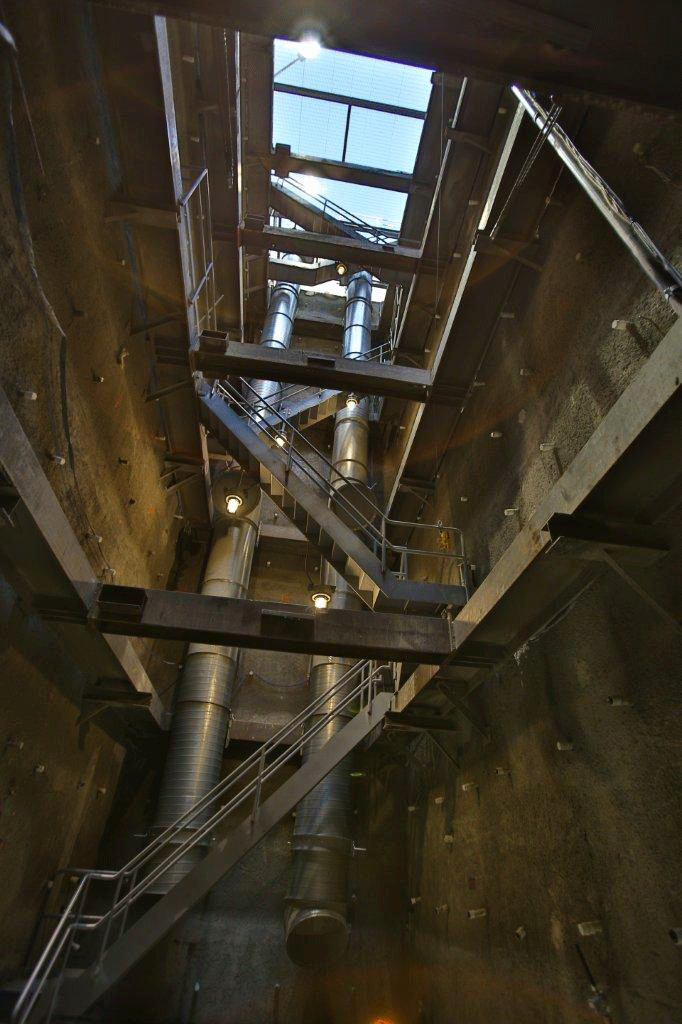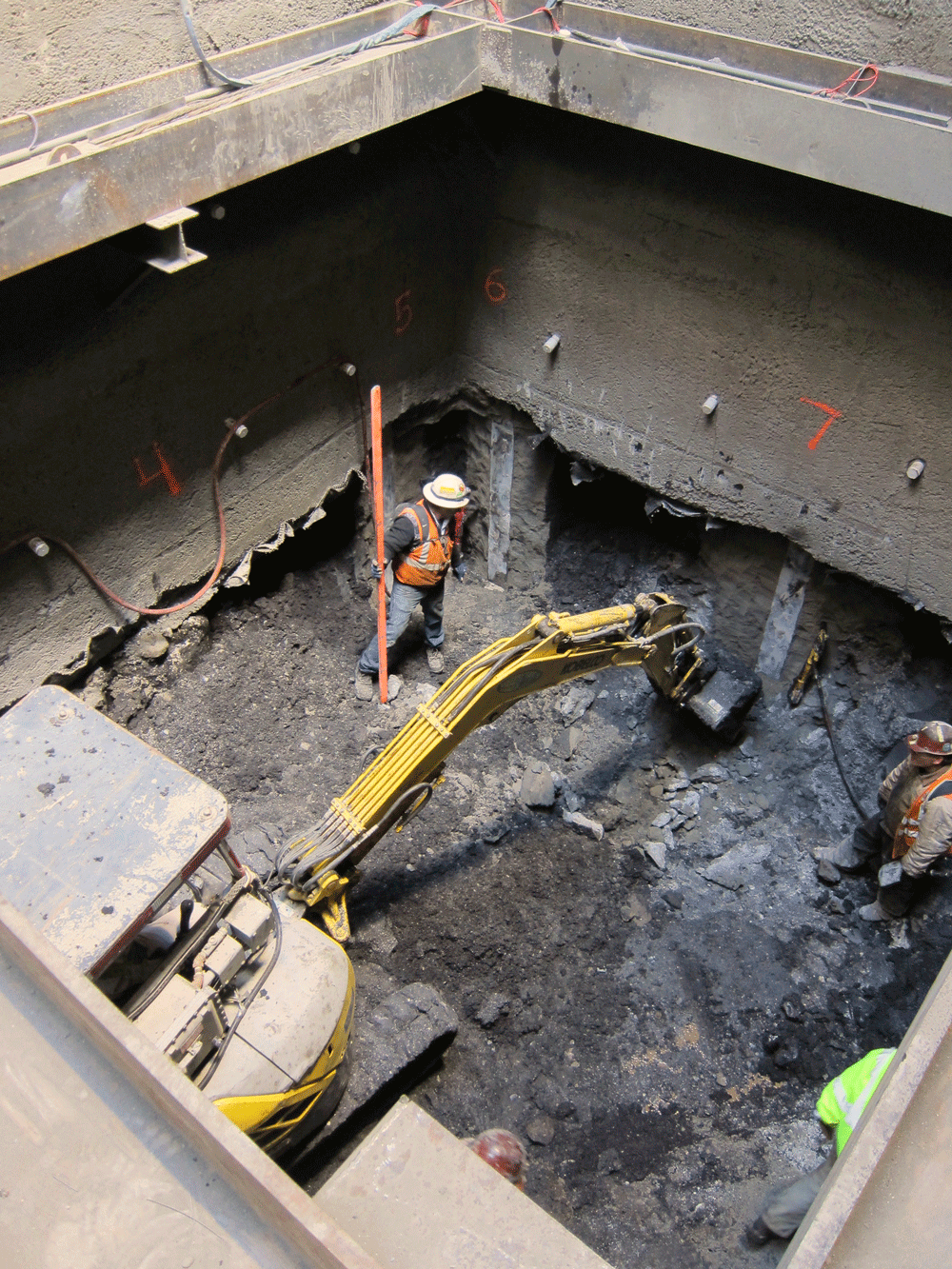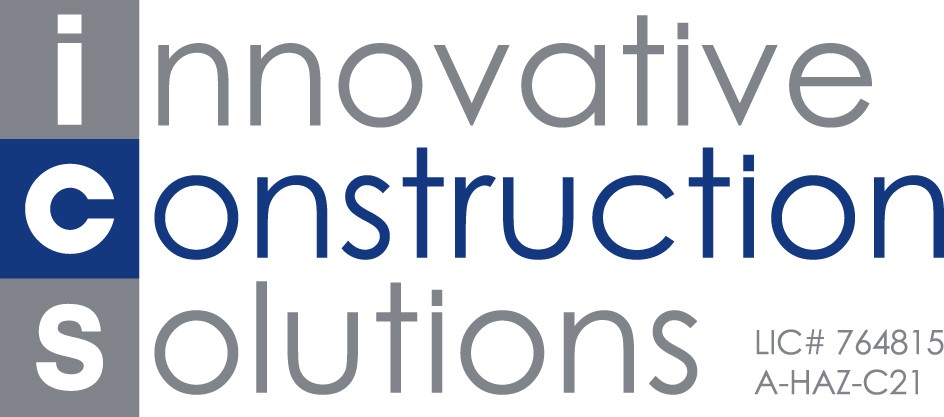Vertical Tunneling through Tar / Sand Formation
Project Name:
Purple Line Expansion: Exploratory Shaft
Purple Line Expansion: Exploratory Shaft
Location:
Los Angeles, California
Los Angeles, California
Type:
Specialty Civil Construction
Specialty Civil Construction
Value:
$6,500,000
$6,500,000
Project Details
L.A. Metro engaged ICS to perform the first steps in the $5.6 billion, 9-mile extension of the Purple Line Subway. ICS was responsible for the excavation and structural support of 18’ x 36’ x 73’ deep exploratory shaft and for supporting Metro in carrying out geologic mapping, geotechnical monitoring of the excavation, tieback testing and gas monitoring within the excavation and within the ventilation system, in-situ testing of geologic materials and collection of samples, and restoration of the site.


Field Tasks
- Install 16 soldier piles, 80 feet in length, around the shaft for structural support.
- Excavate approximately 1,750 cubic yards of tar-saturated soil and structurally support the shaft with a combination of rebar, timber lagging, shotcrete and walers. The excavation was classified by Cal/OSHA as gassy and had to meet all Tunnel Safety Order requirements.
- Classify, transport and dispose of approximately 1,750 cubic yards of naturally occurring VOC-laden soil to an approved disposal facility.
- In compliance with Cal-OSHA Mining and Tunneling requirements for gassy shaft conditions, design and install a ventilation and electrical system to support construction activities both during construction and during the observation period following excavation. The system consisted of two 36 inch exhaust ducts, two 20 HP variable speed exhaust/supply fans each with a range from 5,000 to 20,000 cfm and carbon scrubbers to remove potential H2S in the air stream.
- Design and install an integrated gas monitoring system for extended gas studies, and alert workers of a potential gas hazard during excavation and observation periods. Design and install a dewatering system to lower potential groundwater surrounding the shaft during excavation and observation periods.
- Provide and install geotechnical monitoring equipment to assess the geotechnical characteristics of the ground and structural performance of the support system, including tiebacks.
The Exploratory Shaft Project was completed on-time and on-budget, thanks to constant, intense collaboration between the project owner, City of Los Angeles Building & Safety, design team, ICS and subcontractors. ICS prepared a project-specific quality plan and Metro QA department consistently monitored its implementation, including conducting formal surveillances of significant construction activities. Due to the uniqueness of this project Metro QA assumed full responsibility for leading and executing the special inspections program in accordance with City of Los Angeles Building & Safety requirements. ICS incorporated contractor readiness meetings far in advance for each major scope item. The readiness meetings tracked submittal status, submittal review, construction work plans, and pre job start up meetings.
L.A. Metro, Quality Assurance
Challenges & Solutions
- The excavation took place in a narrow parking lot, approximately 60’ x 100’. Limited workspace required precise planning and an immaculate job site. Crew received noise-sensitivity training to minimize disturbance to the community.
- Gassy conditions (methane and hydrogen sulfide) inside the shaft increased the risk of fire, forbidding the use of any gas-powered equipment. ICS used an intrinsically-safe electric excavator or manually excavated using pneumatic equipment.
- Ventilating the closed-ended shaft required two massive ducts which provided supply and exhaust air to create turbulence and airflow for the working area. Hydrogen sulfide was removed by four 20,000-lb, high-flow, impregnated carbon air scrubbers.
- The tar-saturated soils at the site presented excavation and shoring challenges. The majority of material was removed by hand and loaded into hoppers to be craned offsite. A key objective of the project was to identify best practices for shoring in tarry, sandy conditions, so ICS advised METRO of shoring challenges and advocated a timber lag system in addition to the shotcrete/rebar methods originally specified. Sensors were installed throughout the shoring system to monitor pressure against the shoring membranes.
- The Project is located in a paleo-sensitive zone. A paleontologist remained on site for all excavation activities. Paleontology awareness training taught crew to remain alert for fossil discoveries. ICS excavated in six inch lifts throughout the paleo zone, a span of approximately 30’ deep. When artifacts were found, work ceased until the on-site paleontologist cleared us to proceed. Numerous fossils were unearthed and safely preserved during the excavation.

